A symbol of Turkish-Islamic architecture, Sultan Ahmet Mosque, or as it is more popularly known, the Blue Mosque, is a sight to behold in Istanbul. Commissioned to be built by Sultan Ahmet I, and designed by Sedefkar Mehmed Agha, the mosque construction started in 1609 and today, is known for its luxurious blue color and the six minarets standing against the Istanbul skyline. Today, its architectural complex includes a madrasah, an infirmary and also houses the Mausoleum of Sultan Ahmet.
Blue Mosque Istanbul in a Nutshell
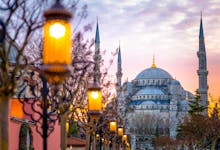
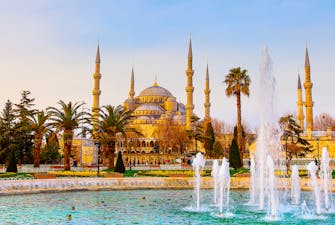
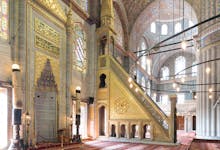
Getting There
Binbirdirek, At Meydanı Cd No:10, 34122 Fatih
Istanbul - Turkey
Get Directions
Why is Blue Mosque Istanbul worth visiting?
The Blue Mosque is a historical mosque in Istanbul, known for its ingenious architecture. The interior of the Mosque is covered with intricate blue coloured hand-designed tiles, especially on the ceiling, which is where the mosque derives its name from.
The architecture is a unique representation of the last significant monument from the Ottoman Empire’s Classic era. It has 6 minarets, one of the three mosques in all of Turkey to have that many ( another of which is in Istanbul itself, the Çamlıca Mosque! )
It has eight secondary domes apart from five main domes, with. elements of the Byzantine and traditional Islamic architecture. The architecture screams of overwhelming size, majesty, and splendor. Functional to this day with the capacity to accommodate up to 10,000 guests at a time. , the Blue Mosque is a UNESCO World Heritage site today and attracts tons of tourists due to how exquisite it is in daylight, then again at night when it reflects light creating a blue heaven
Recommended Blue Mosque Tickets
The Blue Mosque History
Constructed between 1609 and 1616 during the rule of Sultan Ahmed I, it was designed by the architect Sedefkâr Mehmed Ağa. The mosque's name comes from the intricate blue tiles adorning its interior walls. With its distinctive domes, minarets, and cascading courtyards, the Blue Mosque is a prime example of Ottoman architecture and a significant symbol of Islamic culture. It continues to be a revered religious and cultural site, drawing visitors from around the world.
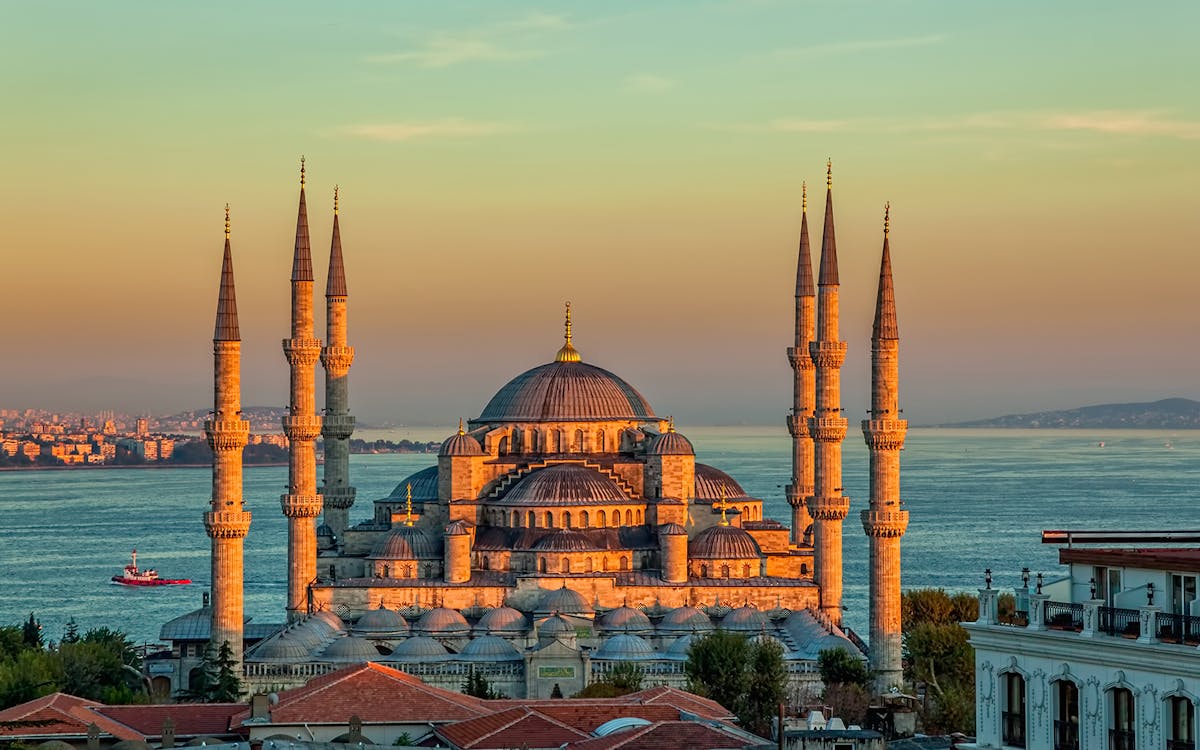
The Blue Mosque Architecture
Commissioned by Sultan Ahmed I and built between 1609 and 1616 in Istanbul, Turkey, this magnificent structure was designed by the renowned architect Sedefkâr Mehmed Ağa. The mosque's stunning exterior features a grand dome flanked by six minarets and cascading domes, while its interior is adorned with intricate blue tiles that give it its popular name. With its harmonious proportions, exquisite decorative elements, and harmonious incorporation of natural light, the Blue Mosque remains a pinnacle of architectural excellence, embodying the grace and splendor of its historical era. Its elegant facade boasts intricate Iznik tiles, predominantly in shades of blue, giving it its colloquial name. The Blue Mosque's harmonious proportions, balanced layout, and skillful interplay of light and space demonstrate a remarkable fusion of Islamic architecture and artistic finesse, rendering it a timeless emblem of cultural and religious heritage.
Highlights of the Blue Mosque
1The Ceiling
The ceiling of the Blue Mosque is among its most amazing features. The blue tiles and stunning ceiling design make it a favorite among people who enjoy design, architecture, and travel. The Mosque's ceiling and upper levels are decorated with more than 20,000 tiles that were all made under the guidance of the master potter from Iznik. The majority of its interior is covered in Kutahya tiles with blue, turquoise, and green as the primary colors. Artistic Arabic Calligraphy is also a predominant feature of its interiors.
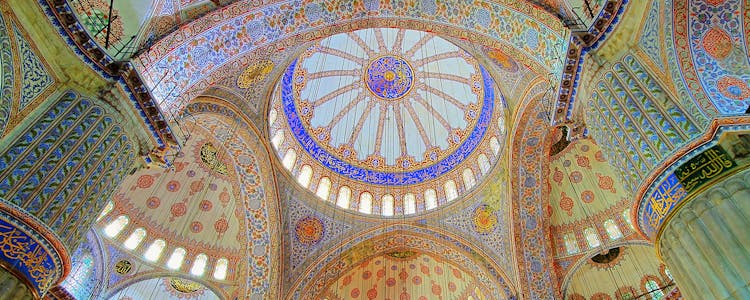
2The Royal Kiosk
You'll find the royal kiosk in the southeast corner of the Mosque. It is made out of a platform, a loggia, and two little retreat spaces. It serves as a doorway to the royal lodge, which is located in the Mosque's southeast upper gallery. It contains a unique mihrab with 100 Qurans on an inlaid and gilded lectern that originally included a jade rose and gold ornamentation. The arrangement is magnificent and is typical of many Ottoman architectures.
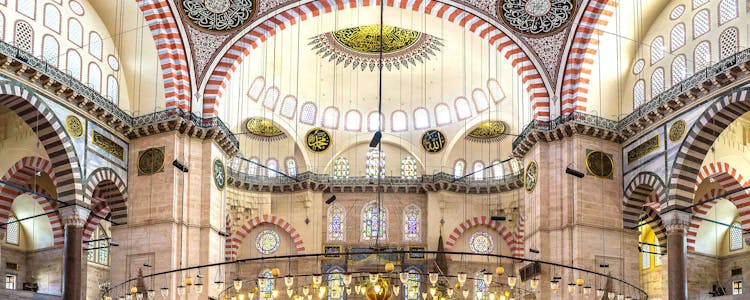
3The Minarets
Four of the mosque's minarets are symmetrical, while two of them are different from these and symmetric to each other. The six minarets of the mosque initially sparked some anger in the people as up until then only the Prophet's Mosque in Mecca had six minarets, and was therefore considered blasphemous. This led to the construction of the seventh minaret in the Prophet’s Mosque in Mecca, as the Sultan decided to fund it to appease the religious clerics.
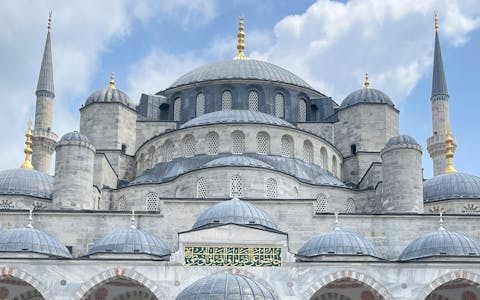
4The Great Tablets
The names of the caliphs and Quranic verses are engraved on the massive tablets that line the Blue Mosque's walls. They were initially produced in the 17th century by the great calligrapher Seyyid Kasim Gubari of Diyarbakir, despite repeated repairs.
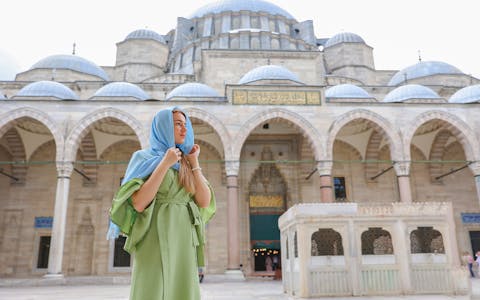
5Stained Glass Windows
Gifted by Signorina of Venice to the Sultan, colored glass forms more than 200 stained glass windows, each letting in a large beams of tremendous quantity of natural light into the mosque.
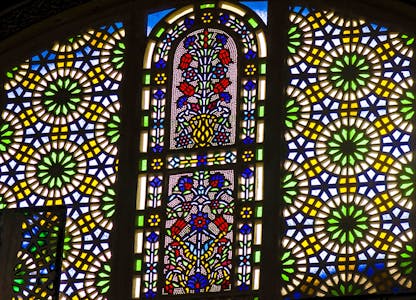
Best Time to Visit Blue Mosque
While it is open all year round, between June and August, when the weather is more pleasant than in winter, is the best time to visit the Blue Mosque. It is advised to avoid the winter months in Istanbul because of the cold. Mid-morning is a good time to visit as well so you can explore at a comfortable pace between the morning and the afternoon prayer.
Blue Mosque Timings
Blue Mosque is still in use as a Mosque, and hence, is closed to visitors when people are praying there. It is generally open from 9:00 am to an hour before sundown every day, omitting 90 minutes for each prayer period and two hours for Friday lunchtime services.
Make sure to check the prayer timings before planning your visit!
Getting There
By Metro
Metro lines M1A, and M2 stop near the Mosque. The nearest stop, Vezneciler, is 4.5 km from the Mosque.
By Train
You can take MARMARAY (HALKALI - GEBZE) train, and hop off board at the Sirkeci Train Station, 1.6 km away.
By Tram
Take the T1 and get down at Sultanahmet Station, which is a 4 minute walk away from the mosque.
Tips to Visit the Blue Mosque
- Visiting Mosques during prayer times can interrupt your tour, hence bear the timings in mind before you plan your visit, and on Fridays pick a time later than the afternoon.
- Make sure you remove your shoes and safely deposit them after putting them in the plastic bags offered at the entrance.
- It is compulsory that a scarf be worn such that it covers the hair properly. Head covers are available at the entrance and recommended for women visiting the experience, if they are not already carrying their own.
- Clothes that cover the full body are recommended for both genders.
- Be mindful that it is a place of prayer.
- Do not eat in the Mosque or make unnecessary ruckus of any kind during your visit.
Blue Mosque Facts
- The Sultan Ahmet Mosque in Istanbul isn't actually known as "the Blue Mosque" by Turks, but many tourists refer to it as such due to the interior's blue tiles, which give the structure its moniker.
- More than 20,000 individually created ceramic tiles from Iznik (ancient Nicaea), which symbolize the pinnacle of Ottoman culture and art, line the inside of the Mosque.
- Sedefkâr Mehmed Ağa, the final pupil of Architect Sinan, Turkey's most renowned architect, who was appointed chief imperial architect to the Ottoman court in 1606, designed the Blue Mosque.
- The Hagia Sophia style and the creations of his master architect Sinan were combined in the Mosque's architecture.
- The minarets in Ottoman architecture are typically plain, but in this building, the minaret bodies are decorated differently from one another, going beyond the usual method.
- Before being replaced by the less appealing copies, the Mosque's interior used to be lit by more than 200 stained-glass windows, which were once a great attraction.
- On the western side of the court entrance, a large iron chain is suspended in the top portion. The Mosque's court could only be entered by the sultan riding a horse. The chain was positioned there so the sultan would have to drop his head each time he entered the Mosque as a symbolic act to demonstrate the ruler's deference to the divine.
Restaurants Near the Blue Mosque

Traditional Turkish cuisine is served at the restaurant in addition to contemporary Turkish cuisine. The food is served here in the authentic style, using clay pots or cooking trays! When you visit them, make sure to try their Mix Kebab Platter and tea.

This is a popular choice among the visitors of Blue Mosque and nearby attractions. The restaurant offers dine-in, and takeouts, and has vegetarian options as well. It probably serves one of the best Koftas in Istanbul!

Grab a bite of authentic Turkish cuisine here! Antakya Restaurant is has a wide variety of food, and also serves vegetarian food.
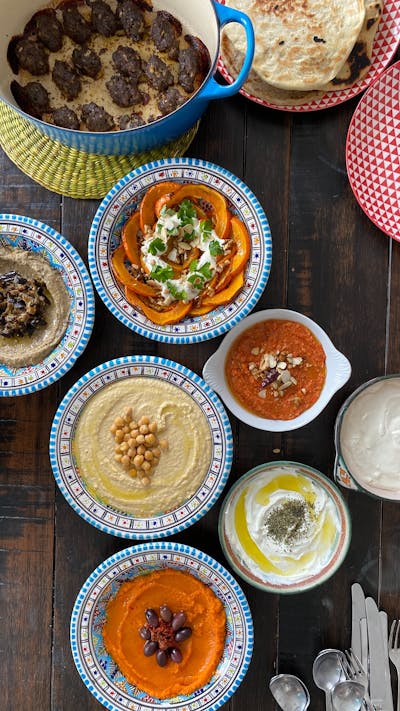
Roof Mezze offers a rooftop setting with brilliant views of the city. There is an interior sitting as well if you are looking for a more convenient and intimate setting to enjoy your dinner. Make sure to try their mezze platter!
Places to Stay Near the Blue Mosque
Things to Do Near the Blue Mosque
FAQs
The Blue Mosque is around 413 years old and was built sometime back in 1609 to 1616.
Around two hours are enough to thoroughly explore the Blue Mosque.
Blue Mosque is open on all days for visitors except during the Prayer five times a day and for two hours on Fridays during the Friday Prayer.
It is important for the visitors to respect the local culture hence modest full coverage clothes are essential. If possible, women should bring a scarf to cover their heads out of respect.
Yes, there are washrooms available in the Blue Mosque.






